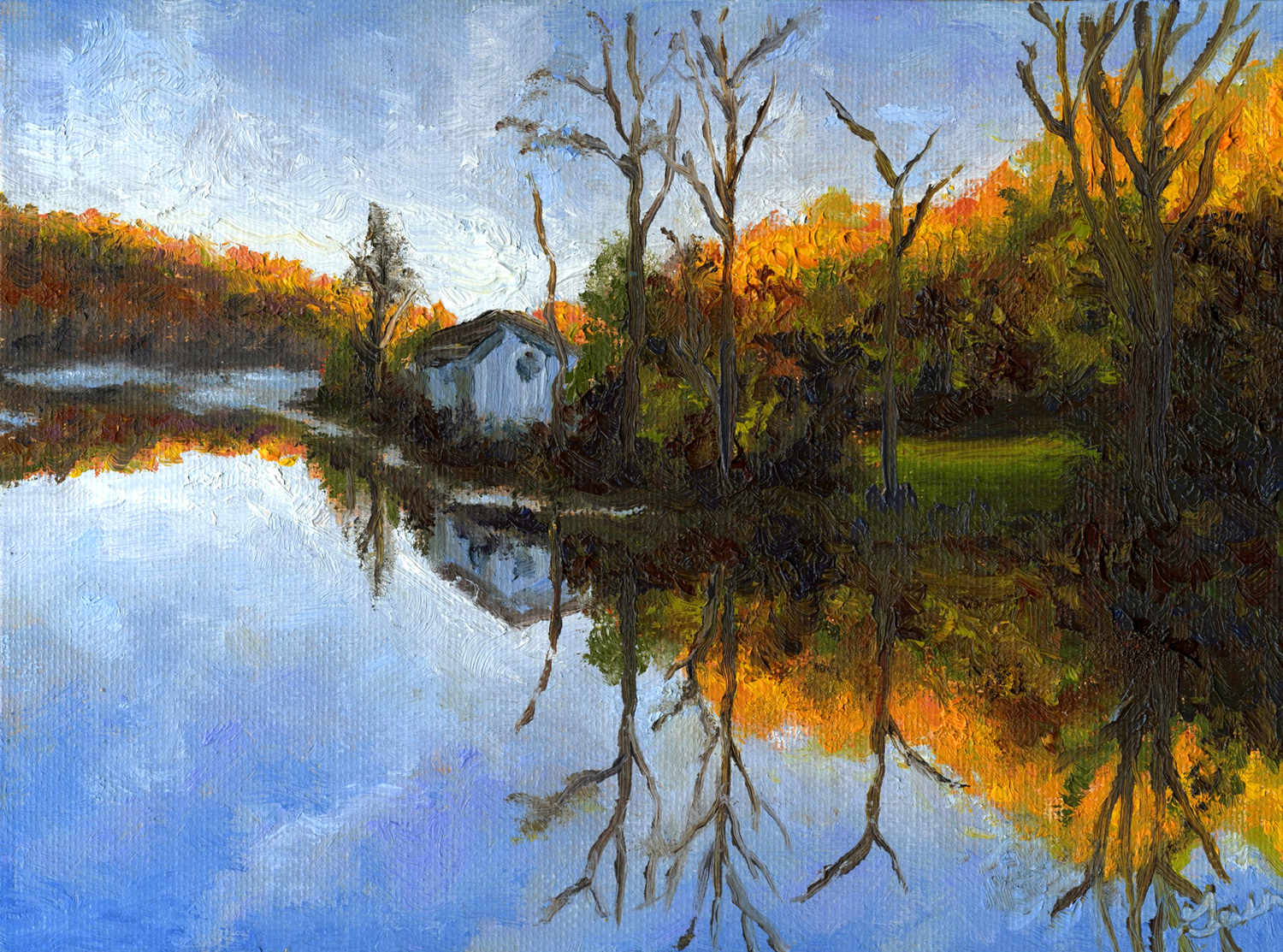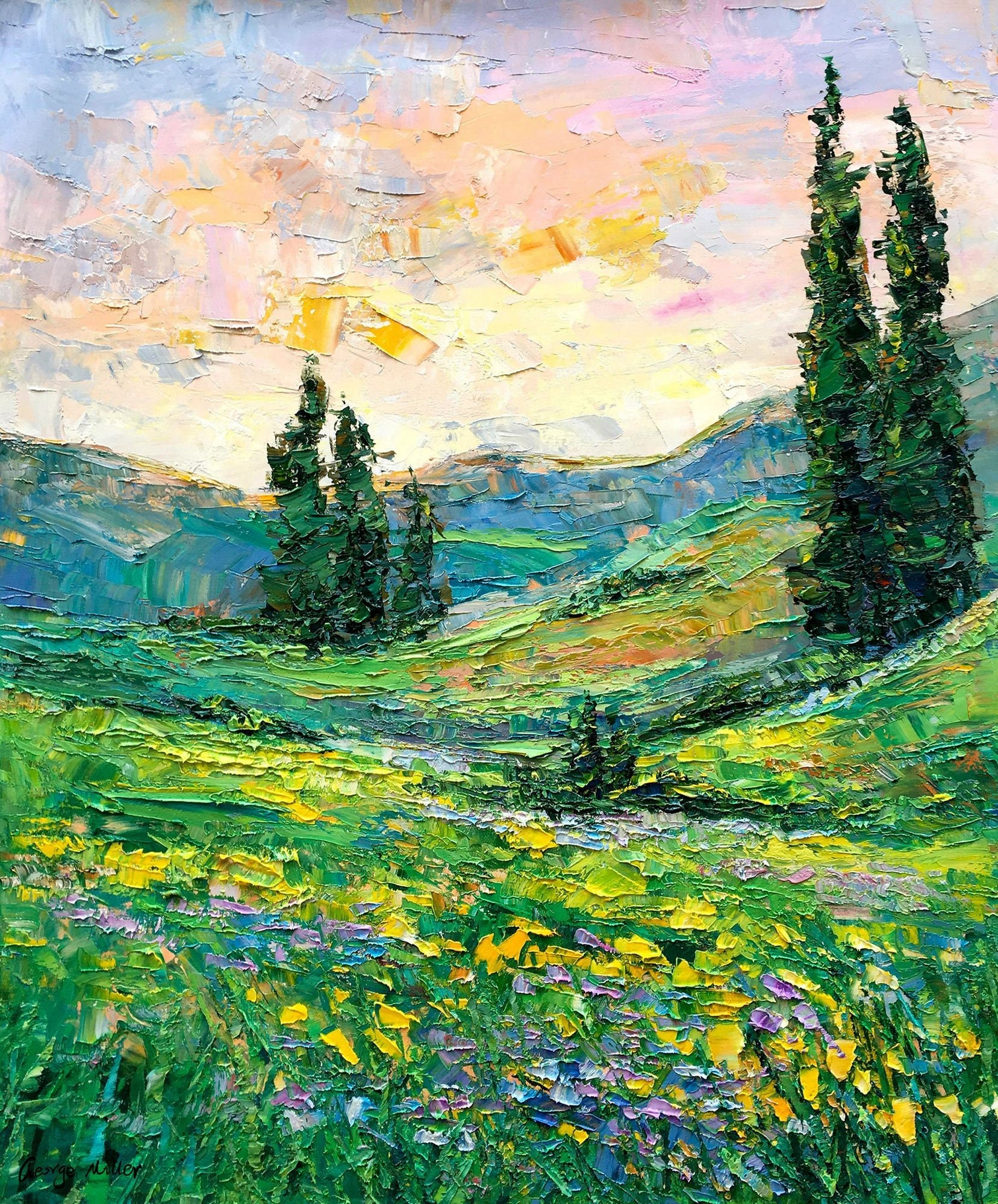Top-Grade Large Format Oil Paintings for Sale Direct from Painters
Top-Grade Large Format Oil Paintings for Sale Direct from Painters
Blog Article
Checking out All Concerning Oil Paints: An Overview to Comprehending Their Appeal and Value
Oil paintings have actually astounded target markets for centuries, offering a look right into the imaginative proficiency of numerous periods. Their abundant background is intertwined with ingenious techniques and extensive emotional expression. Comprehending the products and techniques behind these artworks can improve gratitude. Additionally, the marketplace for oil paints provides opportunities for enthusiasts and capitalists alike. As one discovers this interesting world, the inquiry develops: what makes an oil paint really valuable?
The Background of Oil Painting: A Trip With Time
Although oil paint has roots that go back to old times, it genuinely thrived throughout the Renaissance, when artists discovered its convenience and rich shade capacity. Early examples can be mapped to the 7th century, with techniques evolving especially across societies. The medium ended up being prominent in Northern Europe in the 15th century, especially via the works of musicians like Jan van Eyck, that originated its usage for detailed realism and vivid shades. This duration marked a departure from tempera paints, permitting better depth and appearance. As oil painting spread, it influenced many musicians, causing masterpieces by distinguished numbers such as Leonardo da Vinci and Rembrandt. The tool's heritage proceeds, forming the art world well into modern-day times.
Understanding Oil Paints: Products and Techniques
As musicians check out the globe of oil paints, they come across a varied range of materials and strategies that specify this tool. The key elements of oil paint include pigments, which provide shade, and drying oils, such as linseed, that bind the pigments and facilitate application. Different ingredients can modify the paint's texture and drying time, improving convenience. Strategies like glazing, where transparent layers are accumulated, and impasto, which involves applying thick paint, permit various visual effects. Additionally, making use of brushes, combination knives, and even fingers can produce distinct structures and surfaces. Comprehending these techniques and products enables musicians to totally share their creative thinking and attain the wanted impact in their art work.
The Role of Color in Oil Paints
Color plays an essential role in oil paintings, affecting both aesthetic appeal and psychological vibration. Understanding color concept basics, including the relationships in between tones, can boost an artist's capacity to communicate mood and ambience. Furthermore, mastering color mixing techniques permits higher deepness and richness in a painting's combination.

Shade Concept Essential
Recognizing shade concept is necessary for musicians collaborating with oil paints, as it forms the foundation for creating unified and aesthetically appealing make-ups. Color theory incorporates the research study of how shades communicate, the color wheel, and the connections between key, second, and tertiary colors. Artists make use of corresponding colors to improve contrasts and produce prime focus, while analogous shades advertise unity and cohesiveness within a piece. In addition, the ideas of cool and cozy colors affect the understanding of deepness and area in a painting. Comprehending these principles permits artists to adjust shade successfully, assisting the visitor's eye and connecting their intended message. Proficiency of color theory inevitably enriches a musician's capacity to communicate feelings and concepts through their job.
Psychological Impact of Color
The psychological impact of color in oil paints plays a vital role in how customers regard and connect with art work. Colors evoke specific sensations and moods, affecting the visitor's emotion. For instance, cozy tones like reds and oranges can create a feeling of heat and power, while amazing tones such as blues and environment-friendlies typically stimulate peace or introspection. Artists tactically pick shade schemes to boost narrative aspects, assisting the target market's psychological trip. The saturation and comparison of colors even more magnify these impacts, attracting interest and producing emphasis. Ultimately, the interplay of colors in oil paintings not only boosts their aesthetic appeal however likewise works as an effective medium for emotional expression, enriching the audience's experience and analysis.
Shade Combining Techniques
While several aspects of oil painting add to the overall composition, mastering color mixing techniques is necessary for attaining wanted results and deepness. Shade blending can be come close to via numerous techniques, consisting of the subtractive and additive procedures. Additive blending involves integrating colors of light, while subtractive mixing counts on pigments, where colors mix to develop brand-new shades. Artists frequently utilize a limited palette to create harmonious works, recognizing the partnerships between key, additional, and tertiary shades. Strategies such as glazing and scumbling additionally boost deepness and brightness. By skillfully mixing shades, an artist can stimulate emotions, produce focal points, and attain a sense of realistic look, ultimately raising the paint's visual and psychological influence.
Famous Oil Painters and Their Iconic Works

Well known for their proficiency of shade and technique, oil painters have actually developed several of the most renowned art work in history. Distinguished musicians like Vincent van Gogh captivated audiences with his stirring brushwork in "Starry Evening," while Claude Monet's "Impression, Daybreak" laid the foundation for Impressionism. Leonardo da Vinci's "Mona Lisa" continues to be a long-lasting icon of artistic brilliant, showcasing his skill in capturing human expression. Rembrandt's "The Evening Watch" shows his ingenious use of light and shadow. Other notable figures consist of Pablo Picasso, that changed modern-day art with his vibrant trial and error in jobs like "Les Demoiselles d'Avignon," and Georgia O'Keeffe, whose vivid representations of landscapes and blossoms aided specify American modernism. Each artist's unique design added significantly to the oil painting landscape.
How to Evaluate the Quality of an Oil Paint
Evaluating the quality of an oil painting entails a mindful analysis of workmanship methods, as well as an analysis of color and make-up. Observing brushwork, layering, and the application of paint can expose the artist's skill level. In addition, the interaction of colors and the overall arrangement of elements add substantially to the painting's aesthetic worth.
Examining Craftsmanship Techniques
A thorough analysis of craftsmanship techniques is necessary for figuring out the high quality of an oil painting. Critics must first check out the application of paint; thick, textured brushstrokes might suggest a competent hand, while overly consistent applications could suggest an absence of deepness. oil paintings for sale. The layering technique is additionally crucial; the presence of lusters and varied density can boost brightness and complexity. Additionally, the top quality of the products utilized, such as the canvas and pigments, plays a considerable role in resilience and total visual. Attention to information in aspects like sides and shifts between shades shows the musician's dedication to their craft. Ultimately, these methods contribute to the paint's emotional effect and market worth, offering as indicators of the musician's ability and intent
Evaluating Shade and Composition
While reviewing the top quality of an oil paint, one need to concentrate on the interaction of shade and composition, as these elements are basic to the art work's general impact. Color options can stimulate emotions and develop mood; consequently, the musician's scheme must be checked out for consistency and contrast. A well-balanced structure directs the customer's eye and develops a feeling of unity. Artists frequently utilize techniques like the guideline of thirds or leading lines to boost visual passion. Additionally, the usage of light and shadow can add deepness, enhancing the three-dimensionality of the paint. Eventually, a successful oil painting weds color and structure, engaging the visitor and welcoming a much deeper admiration of the musician's vision and strategy.
Taking care of and Preserving Oil Paintings
Appropriate care and preservation of oil paints is crucial for keeping their stability and durability. To safeguard these artworks, it is vital to present them far from direct sunshine, which can create fading and staining. Preserving a stable setting with controlled temperature and moisture additional aids in avoiding damages. Cleaning up should be done delicately utilizing a soft, dry towel, staying clear of any type of severe chemicals that might harm the paint or varnish. Normal assessments for signs of deterioration, such as fracturing or flaking, are recommended. When keeping or carrying oil paintings, correct cushioning and framing are necessary to avoid physical injury. Eventually, persistent care adds to the aesthetic charm and value of oil paints gradually.
The Market for Oil Paintings: Investing and collecting
Recognizing the market dynamics for oil paints is vital for collection agencies and investors alike. The value of these art work is affected by different factors, consisting of the artist's reputation, historic importance, and existing patterns. Enthusiasts often seek items that resonate directly while considering possible gratitude in worth. Public auctions and galleries function as primary places for trading, with costs fluctuating based on need and rarity. Purchasing oil paints requires research into the market, in addition to an understanding of authenticity and provenance. Additionally, emerging artists may use possibilities for substantial returns, while developed names can regulate high rates. Overall, a calculated technique to accumulating can produce both aesthetic enjoyment and monetary benefits.

Regularly Asked Inquiries
What Are the Environmental Influences of Oil Paint Materials?
The ecological influences of oil paint materials include the release of unstable natural substances (VOCs), hazardous waste generation, and resource removal for pigments. These variables add to pollution and ecological degradation, increasing issues amongst eco conscious artists and customers.
Exactly How Do Different Canvases Impact Oil Painting Outcomes?
Various canvases influence oil paint results significantly. Surface area, absorbency, and appearance top quality can modify paint application, drying out times, and shade vibrancy. Musicians often choose specific canvases to attain wanted results and improve their creative expression.
Can Oil Paintings Be Restored if Damaged?
If damaged, Oil paintings can without a doubt be recovered. Expert more info conservators use various techniques to fix splits, clean surface areas, and address staining, making certain that the artwork keeps its initial elegance and worth for future generations.
What Are the Signs of an Original Oil Painting?
The signs of an original oil painting consist of noticeable brush strokes, texture variations, and an unequal canvas weave (oil paintings for sale). In addition, authenticity may be confirmed with provenance, trademarks, and the presence of a varnish layer unique to oil tools
Just How Has Innovation Influenced Modern Oil Paint Techniques?
Technology has significantly influenced modern oil painting techniques by introducing digital devices for preparation, improved products for structure and long life, and online systems for marketing and sharing art, thus increasing artists' innovative possibilities and audience get to. Oil painting has origins that date back to old times, it really prospered during the Renaissance, when musicians discovered its flexibility and rich color possibility. The emotional effect of shade in oil paints plays a critical function in just how viewers view and attach with art work. While lots of aspects of oil painting add to the general composition, understanding shade mixing methods is vital for achieving wanted results and depth. Evaluating the top quality of an oil painting involves a mindful evaluation of workmanship methods, as well as an analysis of shade and structure. While reviewing the high quality of an oil paint, one must focus on the interplay of shade and make-up, as these components are fundamental to the art work's general impact.
Report this page